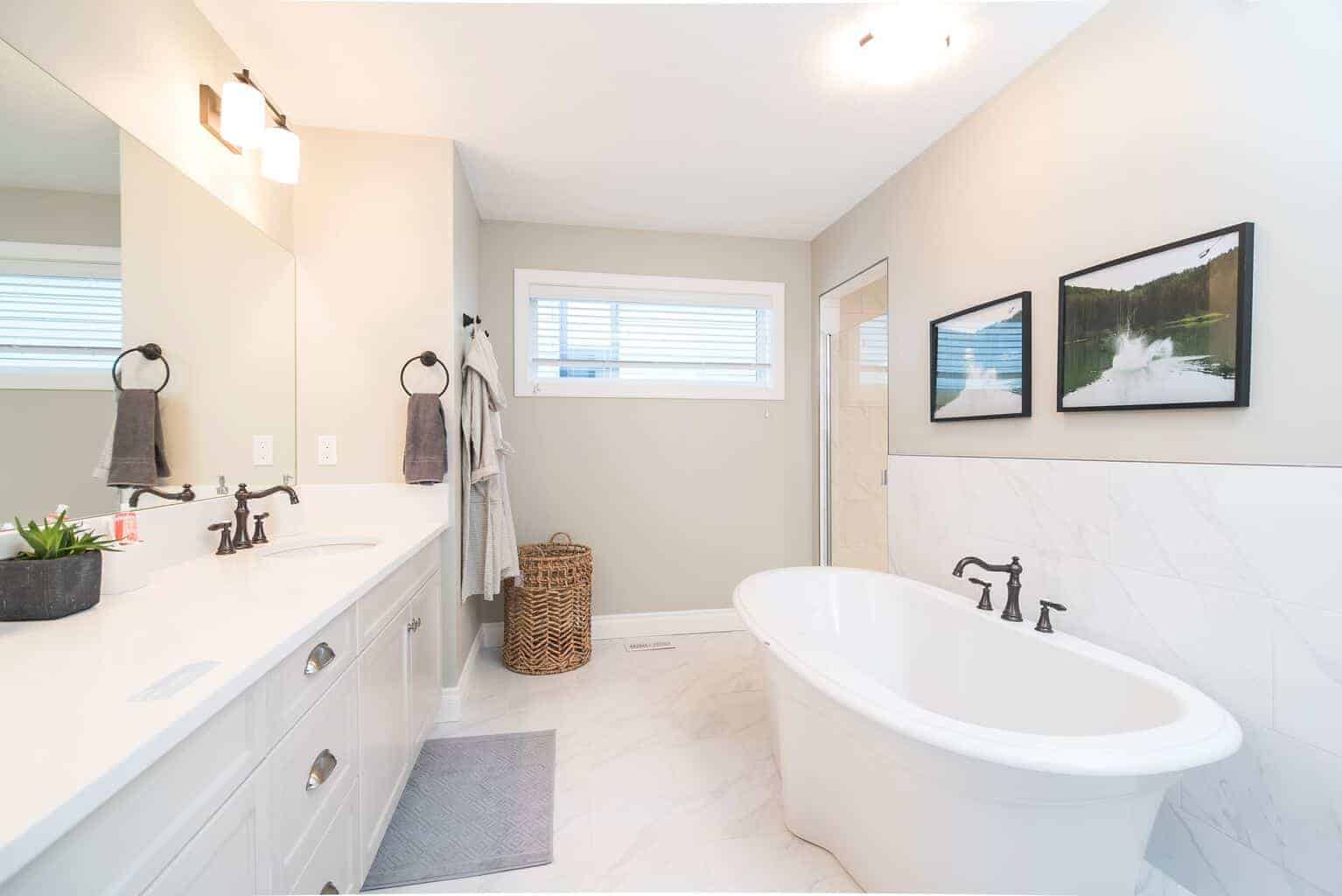After the kitchen, your bathroom is potentially the next most important room in the house which can affect the value of your home.
A full renovation project doesn’t always need to be carried out if your bathroom is looking tired and outdated. Sometimes, it just needs a project based on decorating and replacing a few older features.
With this in mind, many people are choosing to take control of bathroom projects themselves. It can be rather daunting, but with a carefully thought out plan and lots of effort put in, it can be do-able to plan a bathroom project yourself.

However, don’t close yourself off when it comes to bringing in professional help. There will be encounters which require a skilled plumber or fitter to come in and finish a task professionally. To complete the job from start to finish, it will require an array of technical skill and fittings, often taking place in a very compact space.
For this reason, we’ve put together a care plan which should be read through before taking on a bathroom project yourself:
1. Assess what is missing
Always start with a list of key priorities. Do you want your bathroom to resemble a practical family bathroom or a relaxing spa-like sanctuary? Each one will require different specifications.
Either way, the main aspects to look at first include assessing the condition and quality of your current bathtub, shower, sink and toilet. Ask yourself if these look worn and old-fashioned, bringing down the look and feel of your space. If the answer is yes, you potentially need to invest in a new bathroom suite. Your bath and shower area should look inviting, with a classic and timeless feel so they don’t date. Why not browse a range of bathroom suites and individual items for inspiration?
Next, ask yourself if you are happy with your current colour scheme, fixtures and fittings. They need to fit in with how you want to be using your bathroom, not how you currently do use it. Think of a bathroom you have visited that has truly blown you away. What elements can you bring into yours?
It’s about creating a wishlist and seeing which aspects are physically possible.
2. Plan a bathroom layout
Don’t go into the hassle of completely changing a bathroom layout just for the sake of it. If the current layout works, just look at updating instead of replacing. Get the expert opinion from professionals like Plumbers London, where you can devise a plan that
Perhaps it’s a new flooring or tiled shower wall which needs doing. Maybe new cabinets and mirrors are required, or even things like upgrading the windows and doors in the room.
However, if the only option to improve your bathroom is to change the layout, then get everything measured properly. Fully drawn out plans measured correctly will help speed up the job and avoid extra problems when you take these plans to any bathroom professional further down the line.
It’s also worth visiting a bathroom specialist before you become set on a new layout, They will possibly know a lot of tricks around maximising space, and will help minimise the chance of costly mistakes.
3. Have a vision board
Before you even begin the bathroom project, have your desired look all planned out. This may take weeks of seeking inspiration, which is all completely worth it in the end. It’s best to choose your style and design features as early on as possible, as this makes choosing your suites, accessories, fixtures and fittings much easier.
Look on Pinterest and Instagram, but also make time to go out and visit real-life bathrooms. You can find these in boutique hotels or even at other peoples homes!
Of course, you can browse interiors magazines and online home improvement sites too. Just make sure your final mood board is created solely by you, and that you are happy with it before moving on.
4. Be careful with space
Sure, we can all dream of having a wet room complete with two sinks and a standalone bath in the corner. In reality, our space isn’t always going to allow this. While planning how a new bathroom will look, remember to make the most of the space you have, instead of being too ambitious.
<Don’t cram in extras, like cabinets and shelving, if there isn’t physical space. Instead, look at smaller bathtubs (or even corner baths), sinks that come complete with cupboards, and mirrors that double up as overhead shelving cupboards.
5. Don’t forget to ventilate
It’s common for people to get so wrapped up in the design and layout process, yet they forget about ventilation. Ventilation is one of the most important factors of planning an updated bathroom, as the condensation from the shower and bath can damage ceilings and wood, causing mould.
An extractor fan is ideal if you wish to eliminate any dampness. It’s also important to have windows that open wide enough to let out any steam, as you don’t want this flowing through the house into any other rooms.
The bottom line is to be realistic from start to finish about what you can achieve. It’s one thing to have your heart set on that trendy bathroom you saw in a chic boutique hotel, but every bathroom is shaped differently.
Work with what you have, looking at maximising space where possible and fitting the room out with quality fittings that will stand the test of time.
